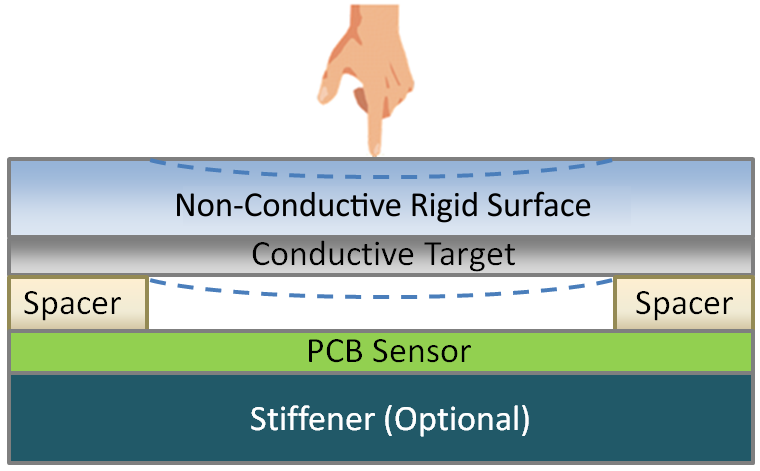SNOA961A February 2017 – February 2023 LDC2112 , LDC2114 , LDC3114 , LDC3114-Q1
- Inductive Touch System Design Guide for HMI Button Applications
- 1Mechanical Design
- 2Sensor Design
- 3Summary
- 4Revision History
1.5.2 Non-Conductive Surface
For non-conductive surfaces such as glass or plastic, a thin sheet of conductive layer, such as aluminum or copper, should be embedded below the surface. When the user presses on the rigid surface at the top of the stack, a micro-deflection is translated onto the conductive layer, bringing the layer closer to the PCB sensor. This alternative approach can extend the application of inductive touch to virtually any material surface.
 Figure 1-8 Example Layer Stack With Non-Conductive
Surface
Figure 1-8 Example Layer Stack With Non-Conductive
Surface